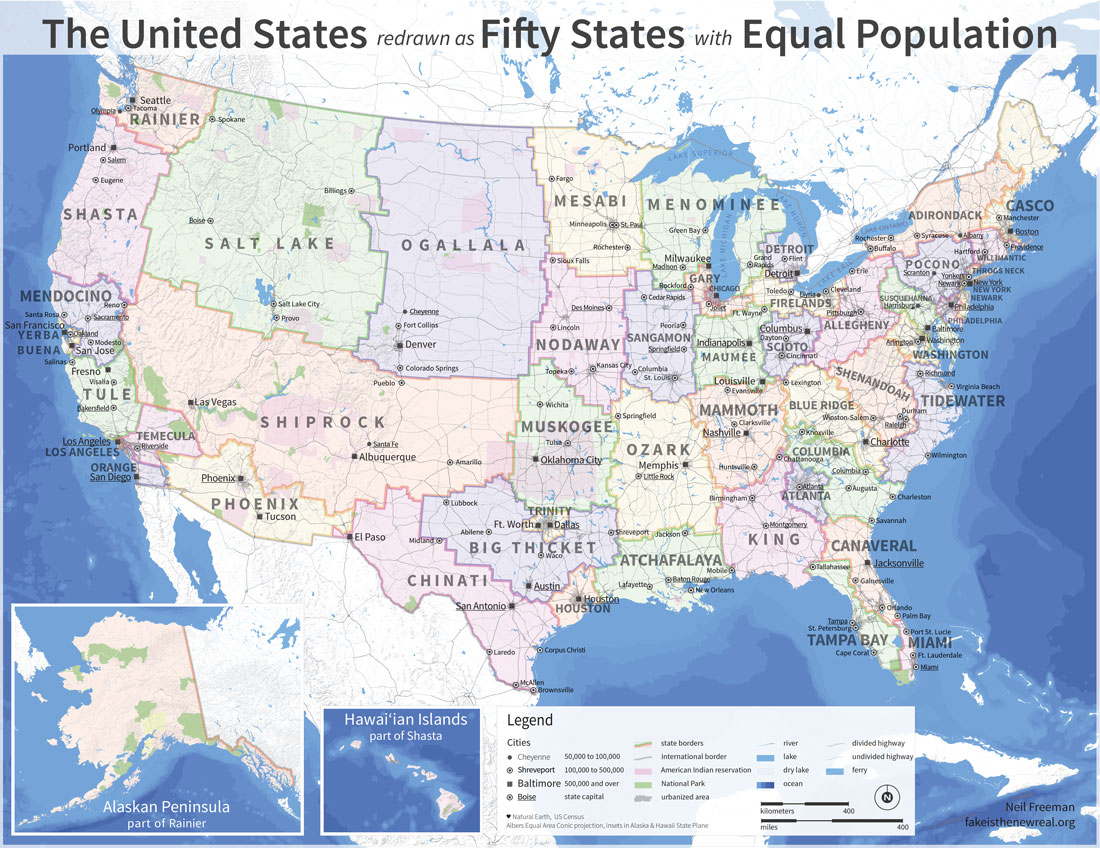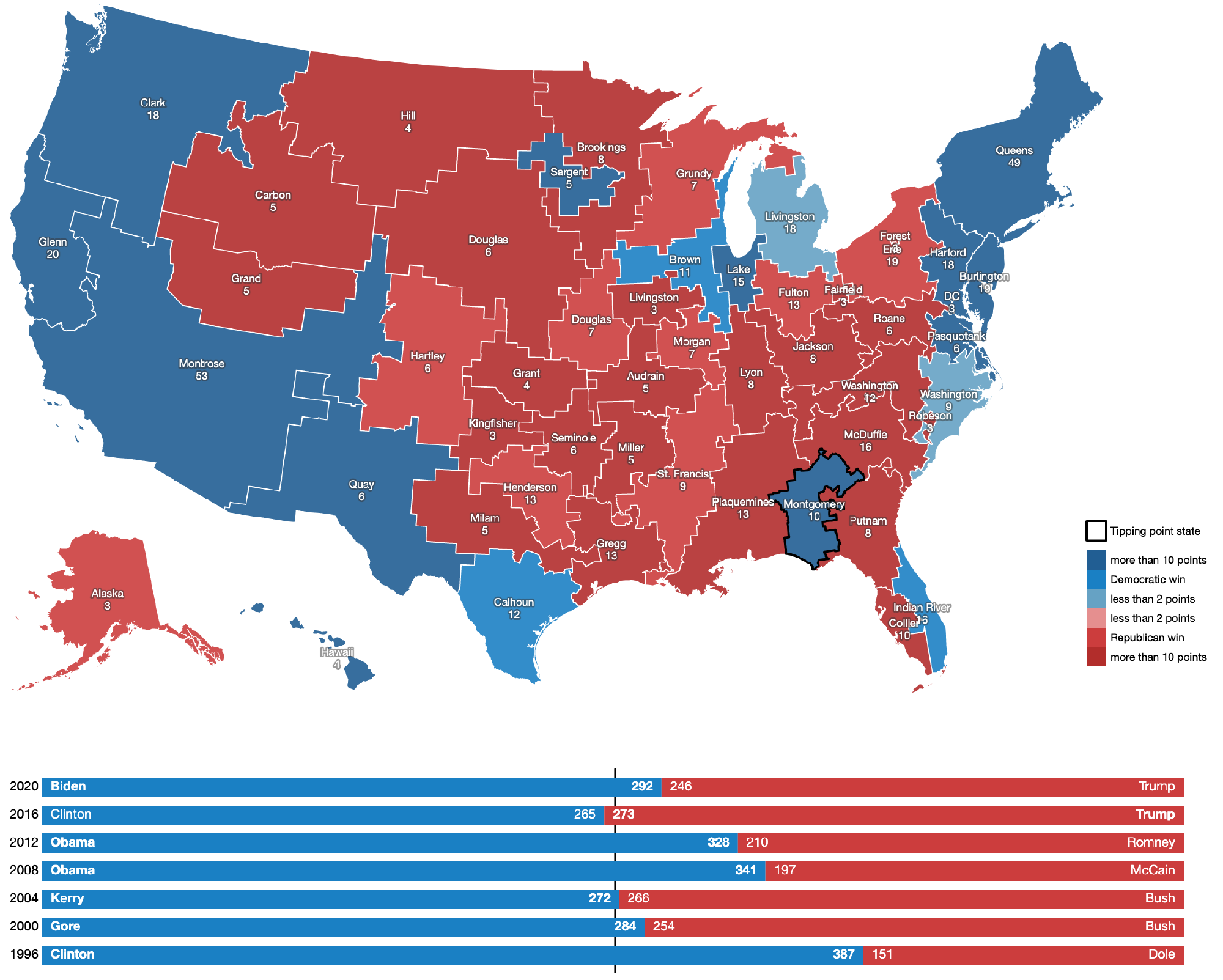Neil Freeman has some interesting data visualizations, including this reimagining of the United States with 50 states of equal population.

This is not a practical Electoral College reform proposal, but it does have some interesting advantages:
- Preserves the historic structure and function of the Electoral College.
- Ends the over-representation of small states and under-representation of large states in presidential voting and in the US Senate by eliminating small and large states.
- Political boundaries more closely follow economic patterns, since many states are more centered on one or two metro areas.
- Ends varying representation in the House. Currently, the population of House districts ranges from 528,000 to 924,000. After this reform, every House seat would represent districts of the same size. (Since the current size of the House isn’t divisible by 50, the numbers of seats should be increased to 450 or 500.)
- States could be redistricted after each census - just like House seats are distributed now.
I especially like the names he chose for these imaginary states. They are primarily based on geographic features like lakes, rivers, and mountains. Some of the most evocative to me are Mesabi, Shiprock, Shenandoah, and Tidewater.
Freeman has another project where you can make random states and see how it affects presidential elections since 1996 (often dramatically).
